Interview: Mitchell Cushman Talks SWEENEY TODD and THE EX-BOYFRIEND YARD SALE
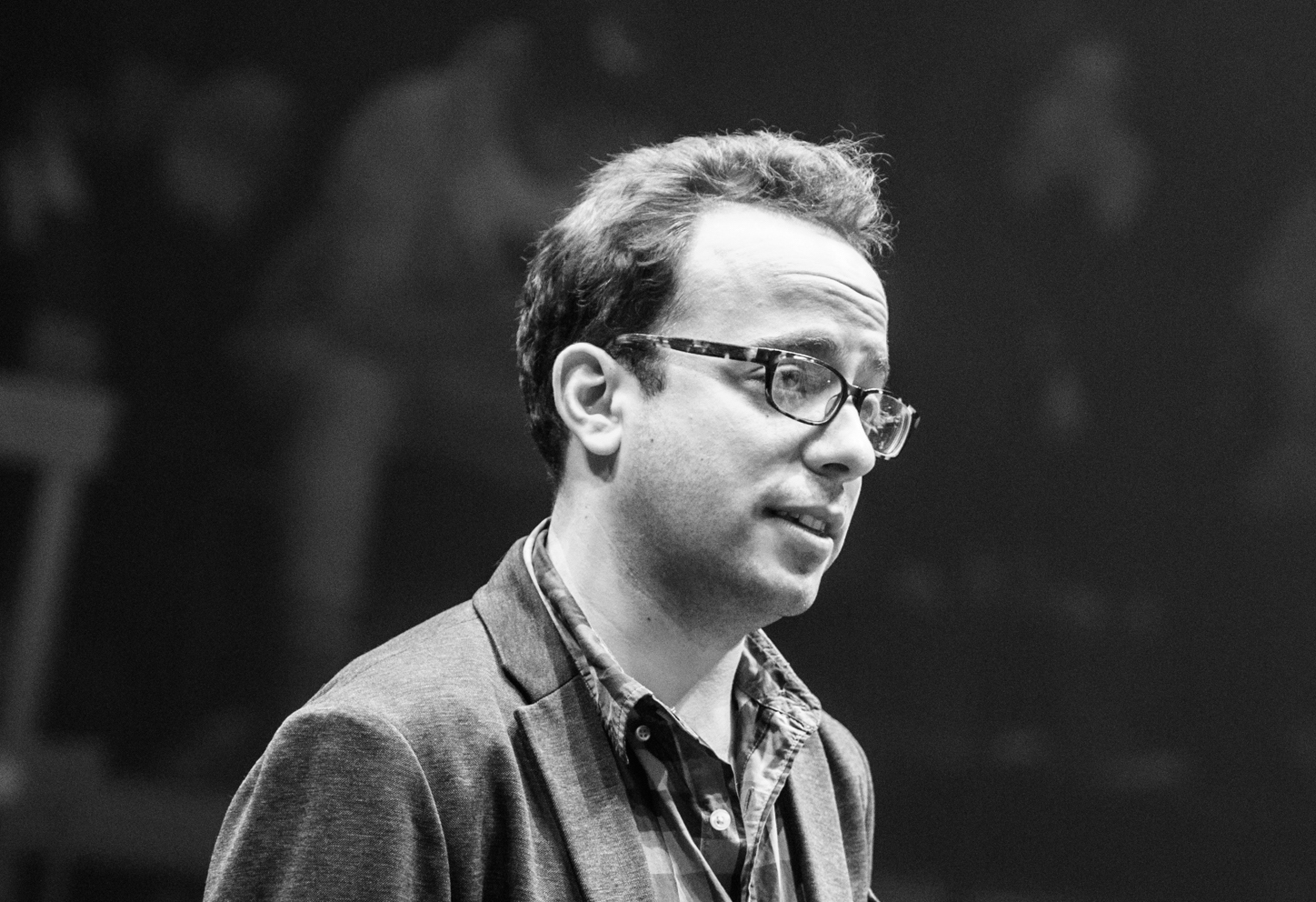
Mitchell Cushman has just finished directing a secret production of Sweeney Todd set in an abandoned building as part of the bigger international immersive project The Curious Voyage.
He's also directing Haley McGee's autobiographical play The Ex-Boyfriend Yard Sale, which is running at Camden People's Theatre from the end of November.
What made you want to become a director?
I grew up around the theatre. My father is a theatre critic - he was a critic for The Observer here in London for many years. I always felt like it would be part of my life. When I was in high school I did a lot of writing, so when I first started directing, I didn't think of it as directing, more of a way of making these things that I'd written happen, forcing my friends to be in them.
Then at university I started directing shows that I hadn't written. I went to a small liberal arts college in Halifax, Nova Scotia in Canada called King's College - which is actually very much based on the British liberal arts college model - and they had a strong theatre society. Some of the first plays I directed were Glengarry Glen Ross, Waiting for Godot, and Tom Stoppard's Jumpers.
I think I knew pretty early on that performing wasn't really for me - it wasn't entirely where I felt comfortable. Writing, I do really love and it's an aspect of the craft that I admire, but I really enjoy the interpersonal aspect of directing.
Is there something you wish you'd known before you started?
It sounds clichéd, but I think that when people start directing, there's this idea that you need to have all the answers. When I think back to earlier projects, I was maybe putting on a little bit of a persona of someone who had all the answers, which wasn't as helpful as if I'd let my guard down a little bit more.
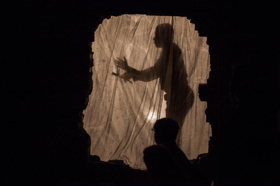
You direct both musicals and plays - do you have different approaches?
Musicals, only more recently. In the past six months I've directed three, but prior to that I'd never really done any. I think I try to bring the same kind of approach and principles to both.
One thing I'm always struck by is that, as a director, I'm working with actors and designers and all these gifted people who have skills that I don't have. So, I'm trying to help people do things that I can't do myself.
I think I've extrapolated that into working with musicals - I really enjoy them as an audience member and I consider myself an appreciator of music, but I don't have any musical skill myself. What I do really like is the collaborative nature of sharing the leadership with a musical director and a choreographer. Having a couple of people in the trenches with you is really a joy.
Do you prefer musicals or straight plays?
I wouldn't say I prefer either of them. I've been having a lot of fun working on the musical projects because they've been really different. I just like variety in the work I see and, honestly, as an audience member and a director, I like to wrestle with complex ideas and stories. It's not that important if it's a musical or a straight show, as long as there's a story and a world I want to invest in.
Do you have a favourite aspect of directing?
I guess bringing disparate elements together. I really enjoy working with designers and coming up with the visual concept for a show, and then getting to connect that with what the actors do in the room.
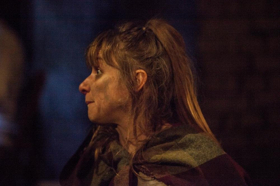
How do you approach site-specific shows?
I've done a lot of immersive and site-specific theatre and, to be honest, it's when I find myself directing in a proscenium space that I'm more racked with doubt or feel out of my depth. Working in site-specific spaces is pretty intuitive to me.
I like that there's not an already-written set of rules. I guess what really appeals is marrying text and space and trying to find a place that matches the characters of the show.
For Sweeney Todd, I started by spending a lot of time in the location, knowing that I wanted to give the audience the chance to explore as much as possible. There's an area referred to as 'the crypt', which is very small and originally we weren't going to let people in there - we were just going to use it as a background. But I felt like if I was watching the show, I would want to have access to it and be brought into every part I could.
So, what is a sequence we could actually use it for? There's the scene where the Judge is sadomasochistically whipping himself, and the intimate surroundings felt appropriate. Similarly, the elevator shaft was too small for 35 people, but maybe it could be a haven for his razors. Very early on I decided that I didn't want to approach the staging literally - like 'The barber shop is always going to be in this corner of this room'. Instead, I wanted to move things round so the staging was dictated by the emotional and psychological language of the piece.
In the first act I mostly had the barber shop upstairs, but then in the second act, when his magic chair is delivered, for a stronger visual impact I felt like putting it on top of the staircase. I tried to create my own rules and logic around how the show moves in the space. I also didn't want the audience to be in one place for too long, but I didn't want them to feel like we were moving around so much that it was just an inconvenience.
Did you think about the physical dangers of the space?
We definitely talked about a lot and I was really conscious of it. There were hazards, like a big pond of water where we made sure to install special lights so it was always illuminated and visible. We had a front of house person whose only job was audience safety - she used to walk around with a flashlight. We made sure that the flow of the show was always dictated by the audience member who's able to get around the slowest, so we're not rushing people from place to place.
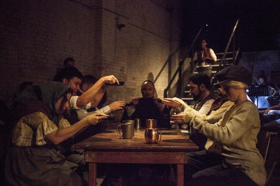
Do you think it's important to rework classics?
I do think it's important. You can do a lot to a piece by putting it in a new performance context, but it feels like the writer is a silent collaborator - you're not really allowed to change the text itself. What's really exciting about Company, for instance, because Sondheim was involved, he was able to update the piece so that it spoke to our context today as much as it did 40 years ago.
I think it's naive for any of us to think that we could write anything that's going to be timeless. Especially if you're dealing with subject matter around human interactions and gender politics - that stuff dates very quickly. There's no perfect answer, because I do think that if you're performing a writer's words you have a duty to perform their play and not some other play, but some plays don't date very well.
In my job, I'm interested to see that by changing the performance context, the setting, the relationship with the audience, you can make people see something new and undiscovered.
Would you have changed anything for your Sweeney Todd?
I don't think so. It's a really well-made musical. I went down this whole rabbit hole at one point... We were rehearsing the show in October, and the world was watching the Kavanaugh hearings. I was thinking about that, while working on a show where a judge has done something pretty despicable to a woman and there's this public impunity about it...
There's actually a lot of the characters of the Judge and Beadle that remind me of people in politics today. I was toying with it in my head, trying to make a little bit more of a connection. But, ultimately, I felt like the play is so steeped in its own myth that if we introduced it into the contemporary, it would have punctured the world a little bit.
What do you think the modern world would bring into Sweeney Todd as it is?
You could do a really interesting contemporary version that would be a commentary on what the Judge and the Beadle are able to get away with - looking at wrongful conviction with Benjamin Barker, and what it means to go to prison and be labelled something and come back. It would be really interesting to see that as Sweeney who's maybe a specific racial minority.
I think for this production, though, because we had the opportunity to come to London and do it in this space that really spoke to the Gothic myth of the show, it would have been self-defeating to contemporise it. But I'm a big fan of seeing how we can update things to our contemporary world.
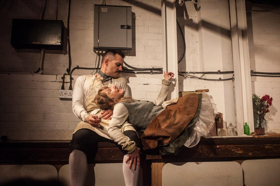
in Sweeney Todd
How much do you keep the audience in mind when you build an immersive show, as opposed to a frontal show?
I try to always keep the audience in mind. What's exciting about it is that you can actually use the audience, in a way - like having them participate in the shaving competition, having Mrs Lovett give one of them a piece of the pie to eat...
Why not get the audience involved - they're there! It's not audience participation in a sense of expecting them to speak back, it's more using the audience as props.
But you can do that in a traditional theatre as well. At Stratford Festival in Canada, I directed a large production of Treasure Island last year, and we really tried to get people to have an active role, especially the kids. We made them feel it was their own adventure - we gave out maps and they had to use them to help the pirates find the treasure. We also invited them up on stage at the beginning and there was this VR installation where you could look through a telescope and see the island.
I went to see The Inheritance the other night - it's fantastic, and there's a moment in it where an actor uses a q-tip and then he throws it into the audience. At the time you think it's funny, someone gets hit with it, but you don't understand the deeper significance of it. A couple of minutes later he has this harrowing monologue about being infected with HIV. I think there's all sorts of way to acknowledge the audience's presence, regardless of the kind of space you're in.
Is it easier to work on a piece that's already established, as opposed to something new?
It's just different. Working on The Ex-Boyfriend Yard Sale, for instance, we didn't have to do any work to make it speak to our current world because the writer exists in our context right now. There's freedom to respond to the ideas in the room, because the text is a living document.
However, purely in terms of gestation time, a new piece needs longer to grow. When your'e doing a revival or a re-imagination, your work is built on the shoulders of everything that's come before it.
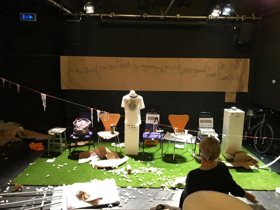
The plays and musicals that get done again and again... It's because there's something exceptional about them. There's also an opportunity to engage with an audience who's coming at it with some preconceptions - it allows you to twist those.
What's The Ex-Boyfriend's Yard Sale about?
It's created and performed by Haley McGee, who's a long-term collaborator of mine - originally from Toronto, but who lives in London now. It's a piece about the cost of love.
The premise of the show - which is all true, as it's autobiographical - is that at one point she was quite a bit in credit card debt, and to get out of it she decided she was going to auction off some of her possessions.
She realised that all the possessions that had value and she could get rid of were gifts from ex-boyfriends. The show is based around eight objects, all of which really belong to her, that were given to her by eight different exes. At the beginning of the performance, as the audience walks into the theatre, all these objects are on different plints like at an auction house or an art gallery.
There's a guitar, a coffee machine, a bicycle, a typewriter, and a couple other things. You get given these little ballots and you write how much you would pay for each object, like you're bidding on them. All that data is collected, and throughout the show we're looking at what the audience rated each object.
Then Haley takes you though a pretty intense formula that she developed with this mathematician trying to find the cost of love. It takes the history of the relationship, the context, the emotional baggage, and tries to assign value to the object based on all of that. It's a unique show and a very interesting intersection between love and maths. It features a lot of interviews she conducted with the exes too.
How much does the autobiographical side of the show impact you as a director?
It's very different, but I really enjoy it. I've worked on a couple of shows where performers and creators were looking at their own lives, and I've never felt like I had a greater responsibility. You want to make sure that you're being truthful and honouring the people who are part of the show. Sometimes it's easy to throw people under the bus for dramatic effect, and it's really important not to do that when you're telling a real person's story.
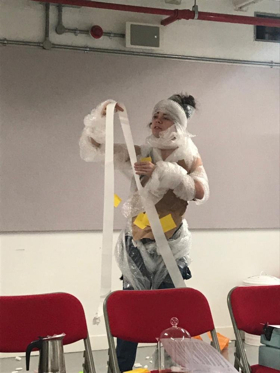
A couple of years ago, in Toronto, I directed a one-person show by this fantastic artist James Smith called Lessons In Temperament - one of my favourite things I've ever worked on. James is many things: writer, composer, pianist, and he tunes pianos too.
This is a show that can be performed anywhere there's a piano that needs to be tuned. He tunes it in front of the audience while telling the story of his family history with mental illness.
He and his three brothers have all suffered from different forms of mental illness, and each part of the piano becomes a metaphor for a different brother and his family. At the beginning he plays a Beethoven sonata and it's entirely out of tune - then he tells you all these stories while tuning the piano, and at the end he plays the same sonata again and it's in tune.
Working on that show, we were dealing with his personal history - a lot of which he hadn't thought about in a long time. James is now one of my best friends, because we became so close working on the show; it was a very personal process.
Is there anything you don't like about theatre?
I get frustrated with theatre that doesn't acknowledge the liveness of the art form. That's why I'm very interested in immersive theatre - I feel like there's an acknowledgment that this is happening right now in this space where we're all together. I get frustrated by work that feels like television or film could do it better.
What would you like the audience to take from The Ex-Boyfriend Yard Sale?
We all have a tendency to assess relationships and previous interactions in our lives to try to figure out if they were worth the time we spent. The show makes the case that all those interactions are worth something, because they mean something in your future journey. Even though it's a show that's consumed by auditing the past, I hope people leave it feeling more at peace with their past experiences.
What did you want the audience to feel leaving Sweeney Todd instead?
I hope they left it wanting to get a shave! [Laughs] No, I hope they left it thinking about how our actions affect other people. Certainly the element of the story I've tried to bring out is that Benjamin Barker/Sweeney Todd is both the hero and the villain of the story.
He was once an innocent and naive person, who is betrayed and then became this monster. I was interested in looking at how that monstrosity ends up sending people on their own downward spiral. I hope people left it thinking about how interconnected we all are, and that you have the opportunity to make a different choice.
The Ex-Boyfriend Yard Sale runs at Camden People's Theatre until 8 December
Photo credits: Claudia Brookes, Mitchell Cushman
Comments
Videos

